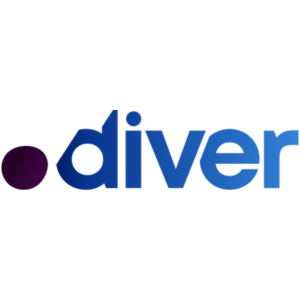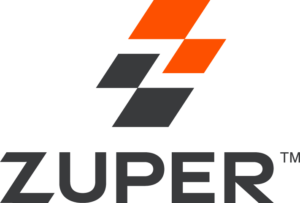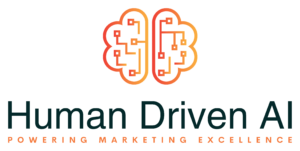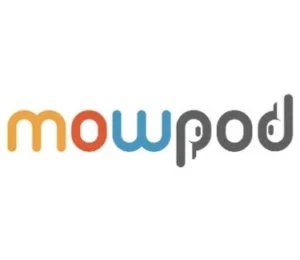Go-to-market growth process
Mark Donnigan
Growth Stage Marketing
- Part 1 Go-to-market growth process
- Part 2Engineering’s role in a marketing go-to-market plan
Show Notes
Quotes
-
“My focus is on mostly technology-oriented startups. So, Go-To-Market is a process that spans far more than just marketing and that gets overlooked. I firmly believe that part of the reason why you see so many startups that fail is because they didn’t go to the Go-To-Market piece. There isn’t a whole strategy and a framework for even what the problem is that they are solving, therefore, you’re coming to market and it’s crickets.” -Mark“I think there is a disconnect about how marketers think about marketing and how founders or non-marketers think marketing is and they probably think of marketing in a way that we would describe as advertising. It’s more like how do I spread the word about what my product is as opposed to us marketers who think about the practice, being about understanding who my customers are, what their needs are, and how my product fills their needs and lastly how I get that message to them with the right reach frequency to drive conversion.” -Ben “If you really can’t say that you fully understand who your market is and what the problem that they are facing is, then you have to start there because to execute the steps (there are four), you’re going to be talking in the wrong direction or you’re simply going to be talking about a problem that your market is either not facing or don’t know that they have.” -Mark “Actually the problem with podcast medium is there are a lot of benefits for being a podcaster but the problem is you don’t really know who the audience is. I directionally have an understanding because I can see who’s popping on my LinkedIn but I have no email subscription, I’m not onboarding anyone as people go to the App Store so I don’t really know the audience as well as I’d like to.” -Ben “I understand what the problem is for people having a need for MarTech-related content but the community is a different beast. People are going to be interacting with each other and I have to validate that there is a need. The reason I bring that up is when you to think about Go-To-Market strategy you can make assumptions but you also need to validate that.” -Ben “Basically I have outlined that there are 4 main steps to follow and I like to call it the ‘Demand Generation Flywheel. The process I’ve developed is really based on some work done years ago by Clayton Christensen called, ‘Competing Against Luck.” -Mark“It doesn’t matter where we are whether we are in a very high-touch sale or low-touch sale, each one of the buyers needs to fulfill a particular job, a job-to-be-done framework.” -Mark“The first thing that the buyer will do is the going through the process of problem identification. So I have a problem, now I am going to begin exploring. How do I solve this?” -Mark“So in other words, I’ve identified my problem, I’m looking for solution then I gotta figure out what is it that I really need, so I do a requirements building type exercise. Then I am assimilating all this and saying, where do I go and what do I do?“ -Mark“The first is you have to capture market attention. This is as simple as, ‘I need people to know about me’, so awareness. But it goes beyond that. It’s explaining what it is and why you need to exist.” -Mark“The second step is educate. What is the problem you are addressing and what is your point of view. There’s an awesome book called Play Bigger and it is all about category design. A major part of developing a category design is developing a POV. A point of view is a statement that someone can hear you and say, ‘yes that’s me.’ That’s the purpose. You want to educate so those that are your target will raise their hand.” -Mark“The third step is engage. This is the amplification of the second step. This is the process of bringing them in with intentional engagement where they have gone to the website and maybe they have given us their email address. The point is they are engaging with us and we are able in some way to engage back with them.” -Mark“Step four is convert and whatever that conversion step looks like for us which might be getting their email address and giving us permission to opt them in.” -Mark“Especially inB2B sale that usually has long buying process, I believe that marketing needs to own this conversion process all the way through from cradle to grave because there can be upsell opportunities, customer success opportunities.” -Mark“I think you’re highlighting a trend that’s been happening. I think we’re seeing it in job titles. You’re seeing companies abandon the CMO and hiring a CRO (Chief Revenue Officer) which is really the merger of marketing and sales and KPIs are shared amongst both of those organization.” -Mark“These four steps, capture, educate, engage, convertthere’s nothing magic about it but this is a flywheel. What changed so much is the buyer journey become incredibly fragmented.” -Mark“The reason why you need to look at this as a flywheel so that when you go to the 4-step process, convert is not the end. You literally just might be cycling around with even the same person. You might go from convert to educate because as I said, you’re not finished when you throw the SQL over the wall.” -Mark“The buyer journey is not linear and sometimes you’ll have customers that you’ll want to continue to market to whether it to be drive some virality, referrals, upsells, retention but when you’re doing something new and the flywheel hasn’t started moving, what should they do?” -Ben “Unfortunately, the market doesn’t care about us or our cool solution. What it cares about is the problem that it solves. Here’s where it gets tricky. This is why the very first thing in a Go-To-Market strategy is to clearly nail what the problem is and then how you label it.” -Mark“The better, faster, cheaper solution and shout it from the rooftops is not sufficient reason for someone to switch to whatever it is they are doing now to what you’re proposing.” -Mark“What gets missed is an exercise where you really have to dive into what that customer is doing to understand, ‘is there sufficient pain for them to switch from what they are doing?’ In my observation, this is where some of my initial assumption about whatmarket opportunities are or TAMS, what gets missed is, yes there are solutions, and you have a better technology but the need is not so great.” -Mark
- Part 1 Go-to-market growth process
- Part 2Engineering’s role in a marketing go-to-market plan
Up Next:
-
Part 1Go-to-market growth process
Today we're going to discuss how to build a go to market strategy. Joining us is Mark Donnigan, who is a Marketing and Business Growth Consultant. In part 1 of our conversation, we discuss his market growth process.
-
Part 2Engineering’s role in a marketing go-to-market plan
Today we're going to discuss how to build a go to market strategy. Joining us is Mark Donnigan, who is a Marketing and Business Growth Consultant. In part 2 of our conversation, we discuss engineering's role in a marketing go-to-market plan.
Play Podcast










